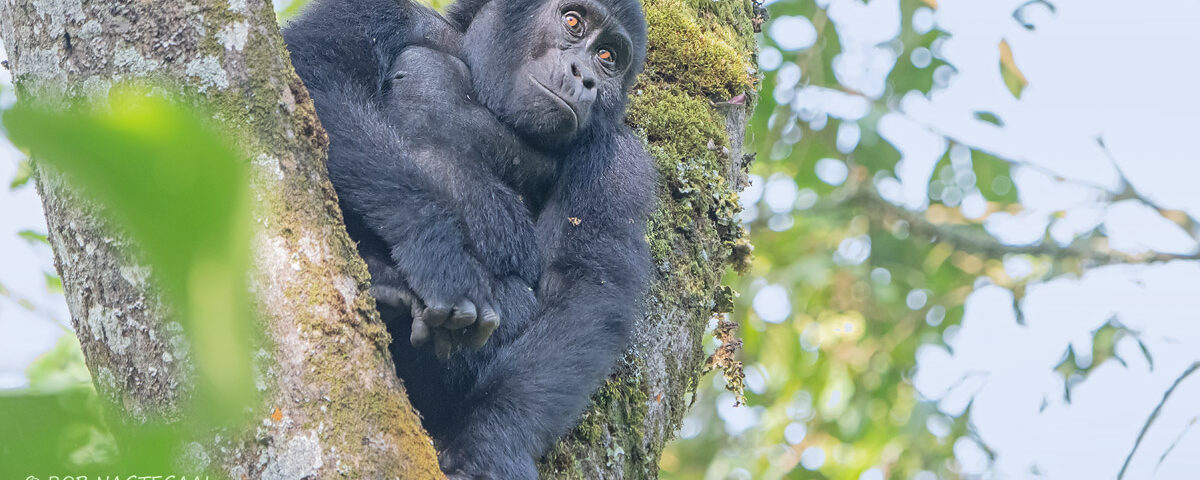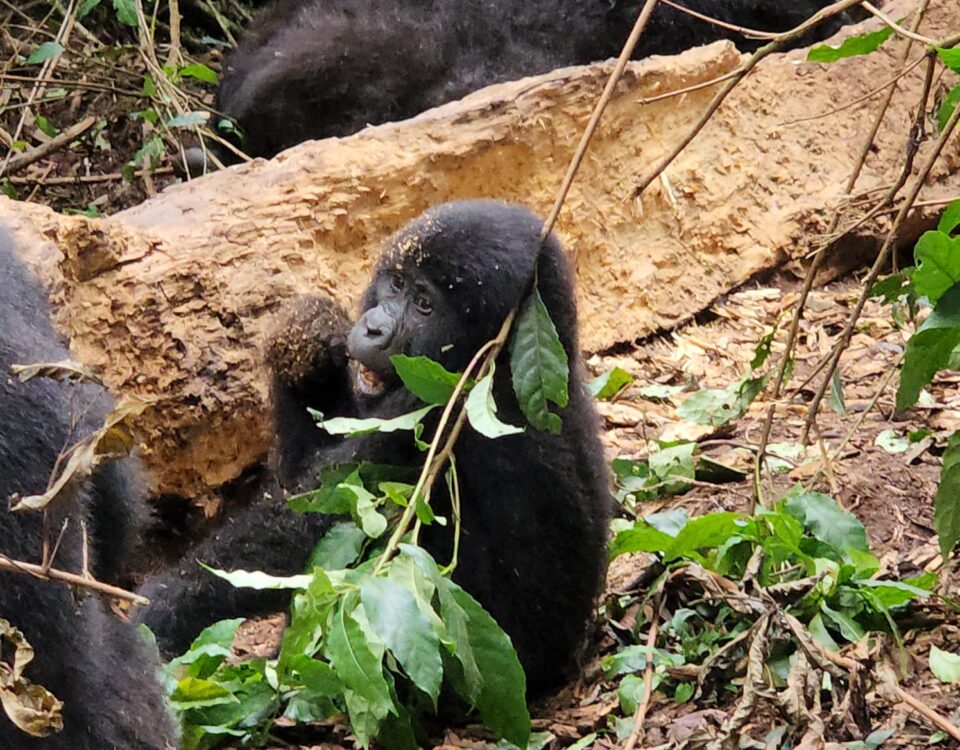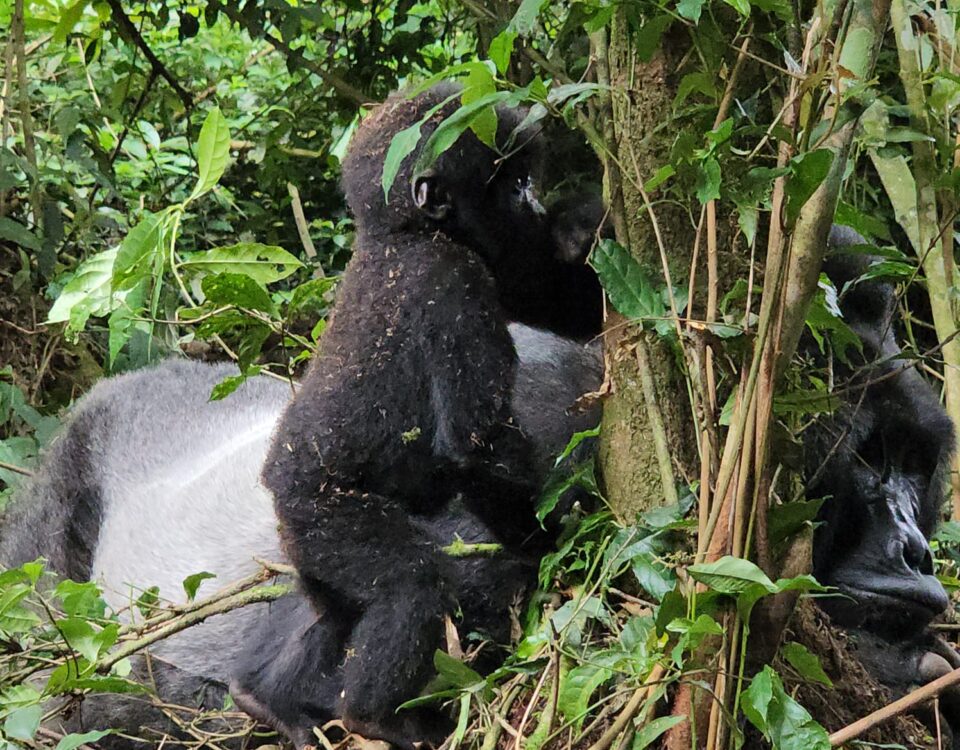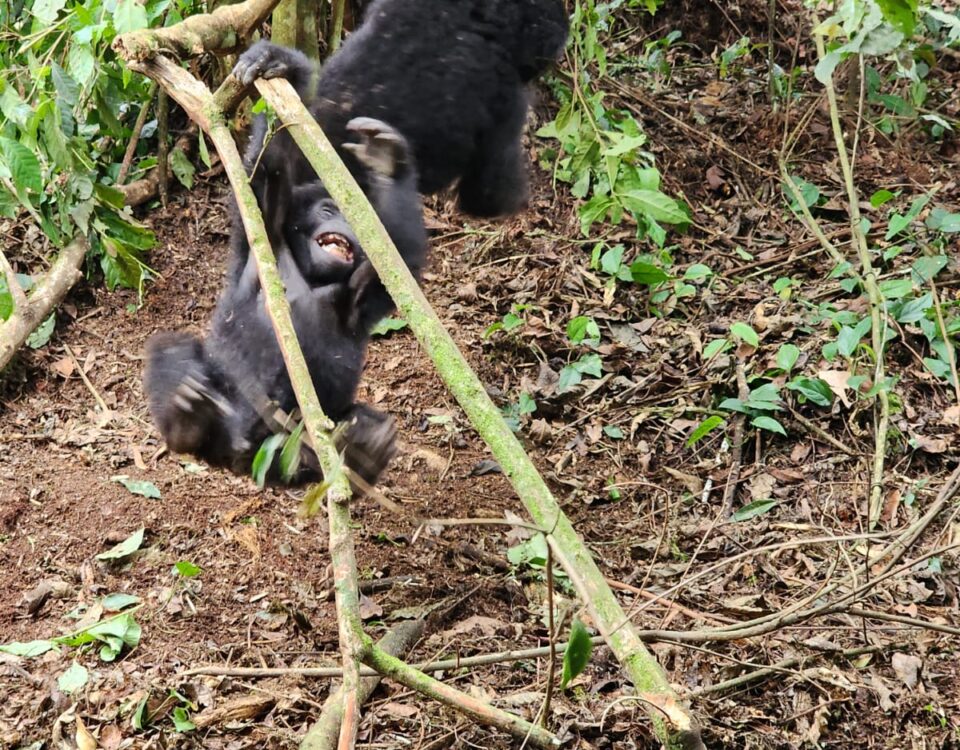
What is the Significance of Gorilla Trekking in Rwanda?
April 1, 2025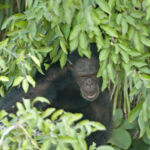
How Many People Are Allowed to Trek with a Gorilla Family at Once?
April 2, 2025Are the Gorillas in Rwanda Habituated for Human Contact?
Are the Gorillas in Rwanda Habituated for Human Contact? One of the most unique and thrilling experiences for travelers in Rwanda is the opportunity to see the endangered mountain gorillas up close during a gorilla trekking expedition. But one common question many tourists ask is, “Are the gorillas in Rwanda habituated for human contact?” The answer is yes, the gorillas in Rwanda are habituated, but this process takes time, care, and careful management to ensure the safety and well-being of both the gorillas and the visitors.
Habituation is the process by which wild animals gradually become accustomed to the presence of humans without feeling threatened or stressed. It involves regular, controlled interactions over a period of time. In the case of the mountain gorillas in Rwanda, the process of habituation allows visitors to observe these magnificent creatures in their natural habitat while minimizing any disruption to their behavior and lifestyle.
In this article, we’ll explore the concept of gorilla habituation, how it works in Rwanda, why it’s crucial for conservation, and the importance of responsible trekking to ensure the continued protection of these incredible animals.
Best Uganda Rwanda Safari Packages
What Does Gorilla Habituation Mean?
Gorilla habituation refers to the process of gradually acclimatizing wild gorillas to human presence. It’s not a simple process—it takes years of consistent and careful interaction by experienced researchers and trackers. The ultimate goal is to allow people to safely observe these gorillas while ensuring they maintain their natural behaviors and habits.
The habituation process begins when a group of wild gorillas is identified for potential habituation. This decision is made carefully, with an understanding of the gorillas’ behavior and the risks involved in human contact. Researchers and park rangers start by observing the gorillas from a distance, ensuring they are not threatened or disturbed by human presence. Over time, the gorillas become more accustomed to the trackers’ presence. The process continues with controlled visits, during which humans approach the gorillas at a slow and non-intrusive pace.
By gradually increasing the frequency and closeness of human contact, the gorillas learn to ignore the trackers. However, it is crucial to note that habituated gorillas are still wild animals and retain their natural instincts. The process of habituation does not domesticate them; they still behave as they would in the wild and rely on their natural instincts for survival.
Why Is Gorilla Habituation Important for Rwanda’s Conservation Efforts?
Gorilla habituation plays a significant role in the conservation of mountain gorillas in Rwanda. Mountain gorillas are critically endangered, and they face a number of threats, including habitat loss, poaching, and disease transmission from humans. In the 1980s, there were fewer than 250 mountain gorillas left in the wild. Today, thanks to years of dedicated conservation efforts, the population has grown to over 1,000 individuals, with Rwanda playing a crucial role in this recovery.
The process of habituation helps ensure that mountain gorillas are protected while providing a sustainable way for tourists to experience them. The revenue generated from gorilla trekking permits goes directly to conservation efforts, including anti-poaching initiatives, habitat restoration, and research. Additionally, by offering tourists the opportunity to observe these incredible creatures in the wild, the economic value of the gorillas is greatly enhanced, creating an incentive for both local communities and the government to continue protecting them.
Habituation also plays a role in scientific research. By studying the behavior and social structures of habituated gorilla families, researchers gain valuable insights into the species’ health, social dynamics, and reproduction. This research helps in the long-term conservation of gorillas and in creating policies to protect them.
How Long Does the Habituation Process Take?
The process of habituating gorillas in Rwanda is a long-term commitment that can take several years. On average, it takes about 2 to 3 years for a wild gorilla group to become fully habituated to human presence. However, the timeline can vary depending on the particular group and the individual gorillas involved.
It’s important to note that habituation is a gradual process, and it must be done with great care. Gorillas are highly intelligent animals, but they are also very sensitive to changes in their environment. They need time to learn that humans pose no threat to their safety. Any sudden movements, loud noises, or aggressive behaviors from humans can undo the entire process, making it difficult for the gorillas to feel comfortable around people again.
In Rwanda, only a handful of gorilla families have been habituated to human presence, and each family is carefully monitored to ensure that the process is proceeding smoothly. As the gorillas become accustomed to the presence of researchers, trackers, and eventually tourists, they are observed to ensure they are still exhibiting natural behaviors, such as foraging, grooming, and socializing, without showing signs of stress or aggression.
Are All Gorilla Families in Rwanda Habituated for Human Contact?
No, not all gorilla families in Rwanda are habituated for human contact. As of today, there are around 12 habituated gorilla families available for trekking in Volcanoes National Park. These groups have undergone years of careful habituation and are monitored regularly to ensure their well-being. However, there are also wild, non-habituated gorilla groups living in the park.
These non-habituated groups are left undisturbed to live in the wild. They are not accustomed to human presence, and researchers avoid approaching them to prevent causing them stress. The decision to habituate a gorilla group is made after careful consideration of their behavior, health, and the potential risks involved. Not all gorilla families are suitable candidates for habituation, as some groups may be more sensitive to human contact and could be adversely affected.
What Happens During a Gorilla Trekking Experience?
Once you have a permit for gorilla trekking in Rwanda, you’ll be assigned a specific habituated gorilla family to visit. Your trek will be led by an experienced guide and accompanied by a team of trackers who know the gorilla groups and their movements. The trekking experience typically involves hiking through the dense jungle of Volcanoes National Park, which can take anywhere from 1 to 4 hours, depending on the location of the gorilla family on that particular day.
Once the group is located, trekkers are given strict guidelines on how to interact with the gorillas. The key rule is to maintain a safe distance of at least 7 meters (21 feet) from the gorillas, including babies. This helps prevent the spread of diseases from humans to the gorillas and allows the gorillas to maintain their natural behavior without feeling threatened or stressed.
During your time with the gorillas (usually around one hour), you’ll have the opportunity to observe them in their natural environment. You might witness adult gorillas foraging, juveniles playing, or silverbacks overseeing the group. The experience is often described as life-changing as visitors have the rare chance to witness these incredible animals up close.
The Role of Responsible Trekking
While the gorillas in Rwanda are habituated for human contact, it’s crucial to emphasize the importance of responsible trekking. Trekking to see the gorillas is a privilege, and visitors must follow strict guidelines to ensure both the safety of the gorillas and the trekkers. These rules are in place to protect the gorillas from disease and human disturbance, and they must be adhered to at all times.
Some of the key guidelines include:
- Maintain a safe distance: Always keep a minimum of 7 meters between you and the gorillas.
- No flash photography: Flash photography can startle the gorillas and cause unnecessary stress.
- Follow your guide’s instructions: Guides are trained to ensure that your visit doesn’t disturb the gorillas and that you stay within safe boundaries.
- Limit group size: Only a small number of trekkers are allowed to visit each family group at a time (usually a maximum of 8 visitors per family) to minimize disturbance.
Conclusion: The Importance of Habituation in Gorilla Trekking
In conclusion, the process of habituating gorillas for human contact in Rwanda is a delicate and essential aspect of mountain gorilla conservation. Through careful and responsible management, the mountain gorillas of Rwanda have become accustomed to human presence, allowing visitors to observe them in their natural habitat. This interaction provides important revenue for conservation programs, supports local communities, and helps ensure the survival of the species.
The success of gorilla trekking in Rwanda relies on the ongoing commitment to responsible tourism and habituation efforts. As a visitor, it’s important to respect the guidelines set in place to protect both the gorillas and the natural environment. In doing so, you contribute to the continued conservation of this incredible species, ensuring that future generations can also experience the awe of seeing mountain gorillas up close in the wild.

